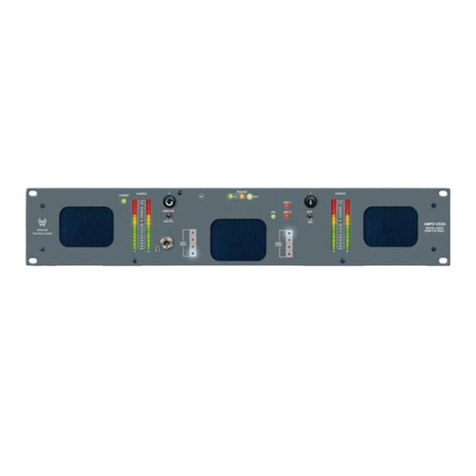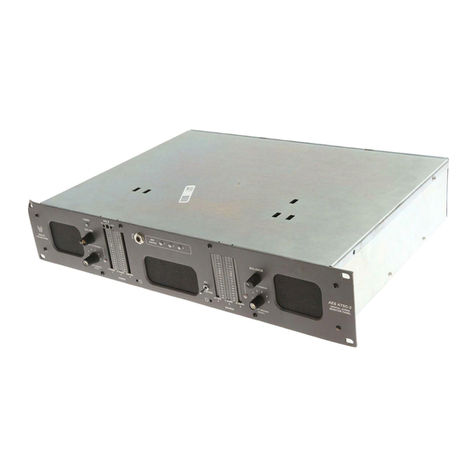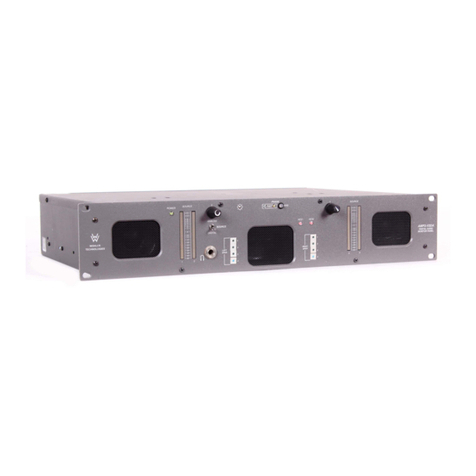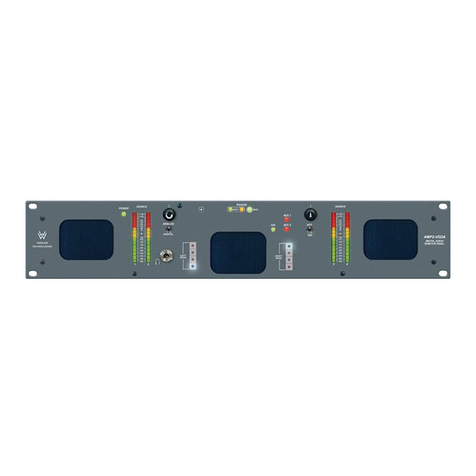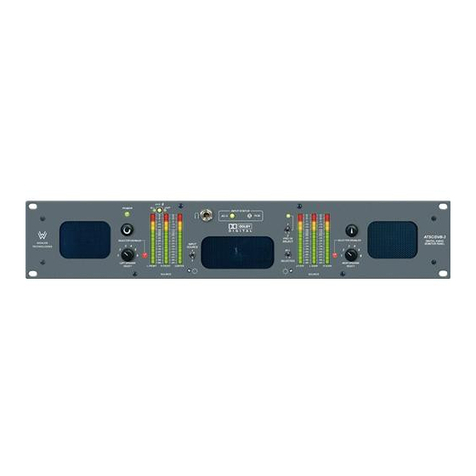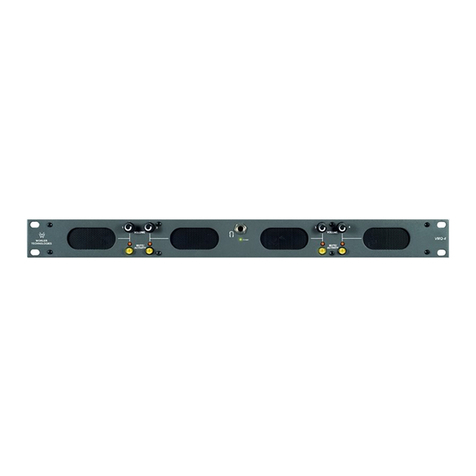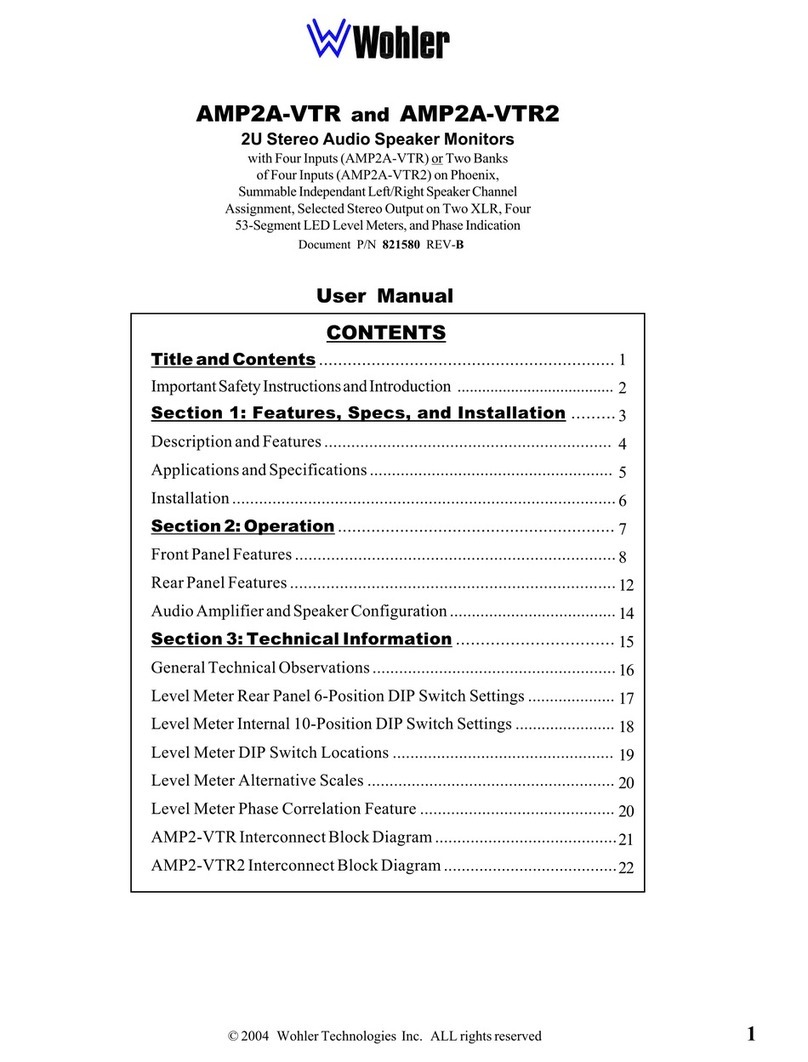
© 2003 Wohler Technologies Inc. ALL rights reserved
10
ATSC/DVB-3/SDI User Manual P/N 821557 Rev-A
9
1
2
3
4
5
6
7
8
Please refer to Figure-2a on the following page to familiarize yourself with the front panel features of the ATSC/DVB-3/SDI unit.
The following sections describe these features and are referenced, by number, to Figure-2a.
Front Panel Features
Section 2: Operation
Speakers (Left/Middle/Right)
The ATSC/DVB-SDI internal speaker system is comprised of two mid-range tweeter speakers (left and right) and one
woofer speaker (middle). The two side channel speakers reproduce, in stereo, only the mid and high frequencies. Please note
that the woofer speaker (middle) is not a dedicated Center nor LFE speaker.
Speaker Select Switches (Left and Right)
Use the left switch to select any one of six selected channels for monitoring from the left speaker. Use the right switch to
select any one of six selected channels for monitoring from the right speaker.
Note: These two switches are only functional when the All/Selected Switch (Item 7) is in the SELECTED position. These
two switches are NOT functional when the All/Selected Switch is in the ALL position.
Speaker Select Disabled Indication LEDs (Left and Right)
When the All/Selected Switch (Item 7) is in the ALL position (thus disabling the Speaker Monitor Select Switches) both
of these LEDs will glow RED.
Audio Level Meter LED Bargraph Displays (1-6)
Audio levels for source channels 1through 6are displayed via these six high-resolution 53-segment LED bargraph display
level meters (three on the left side of the front panel; three on the right side). Dynamic range for these meters is 65 dB and
they are able to display signal levels using both PPM and VU standards. An adjustable-duration hold of peak PPM value may
also be displayed. Each meter is labeled according to the standard Surround Sound nomenclature (left front, right front, center,
low frequency effects, left surround, and right surround). See page 20 for more information about these level meters.
Bargraph Brightness Trim Pot (Left and Right)
These two trim pots are recessed into the front panel and can be accessed using a small screwdriver. Turning either trim pot
clockwise will increase the relative brightness of the associated bargraph display LED segments. The left trimpot affects the left
three bargraph displays (1-3); the right trim pot affects the right three bargraph displays (4-6).
Input Source Select Switch
This 2-position toggle switch allows the operator to choose between two possible input sources (1-AES or 2-SDI) for
monitoring through the unit. Choosing 1-AES selects the AC-3 or PCM/AES signals entering the Source 1 connectors on
the rear panel (See Items C and D, page 14). Choosing 2-SDI selects an AC-3 or PCM/AES source that is de-embedded
from the SDI signal entering the Source 2 connector on the rear panel (see Item F, page 14).
All/Selected Switch
When this 2-position toggle switch in in the ALL position, a stereo mixdown of the five full channels is applied to the speaker
amps (the LFE channel is excluded). In this posiotion both the left and right Speaker Select Switches (Item 2) are disabled
and the Speaker Select Disabled Indication LEDs (Item 3) will glow RED.
When this switch is in the SELECTED position, channel selection defaults to the settings as selected by the left and right
Speaker Select Switches (Item 2) and the left and right Speaker Select Disabled Indication LEDs (Item 3) will be unlit.
SDI Group Select Switch (1, 2, 3, or 4)
This 4-position rotary switch allows the operator to choose SDI GROUP 1,2,3, or 4for monitoring. The Subgroup (1or 2)
of each SDI GROUP is selected using the SDI Subgroup Select Switch (Item 17, page 12).
Note that the Input Source Select Switch (Item 6) must be set to 2-SDI in order for the selected SDI signals to be actively
monitored.
Volume Control Pot
This controls the loudness of the audio reproduced by the internal speakers or connected headphone. Clock-wise rotation of
this control increases the loudness of the monitored audio.
(Continued)






